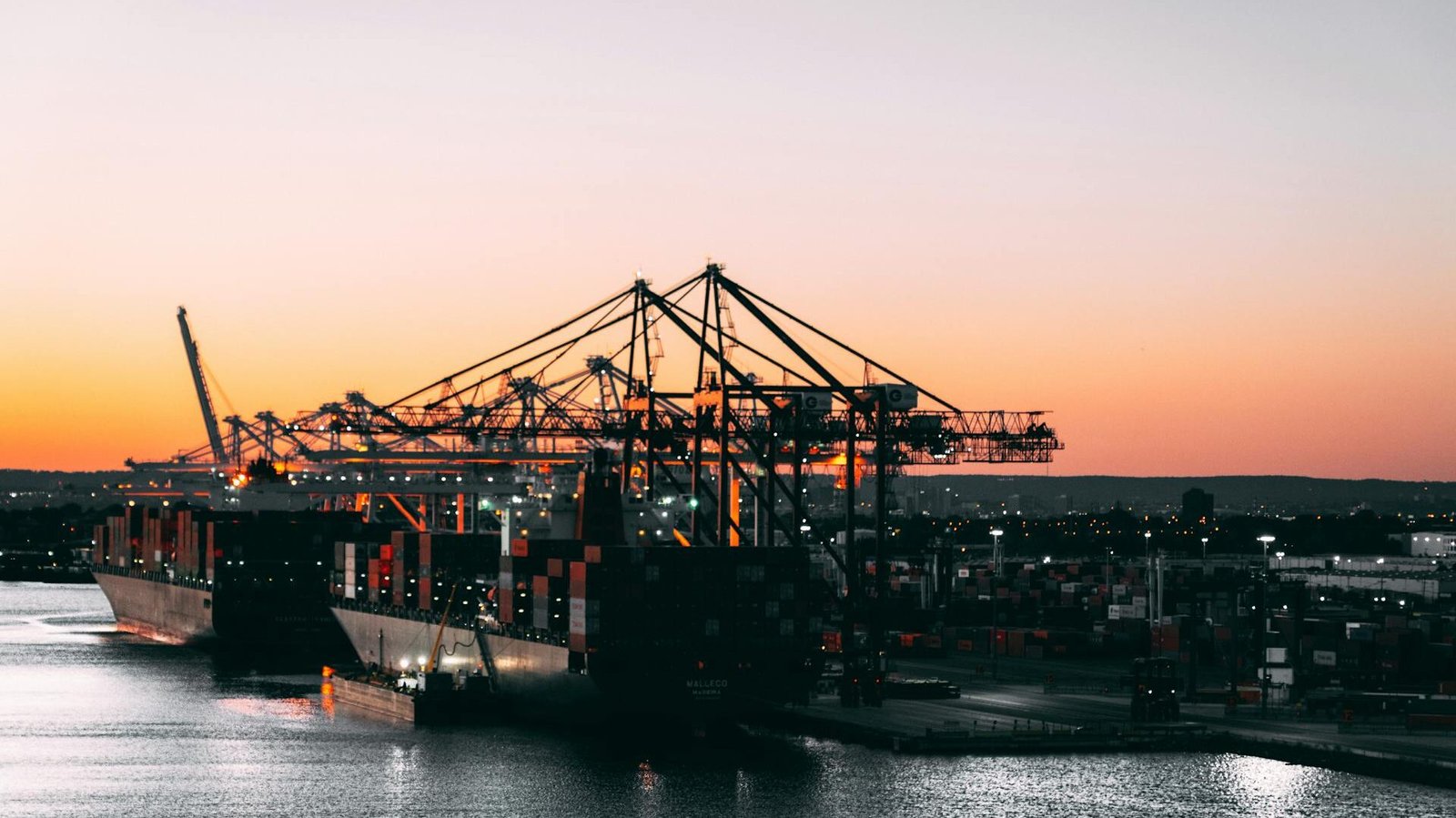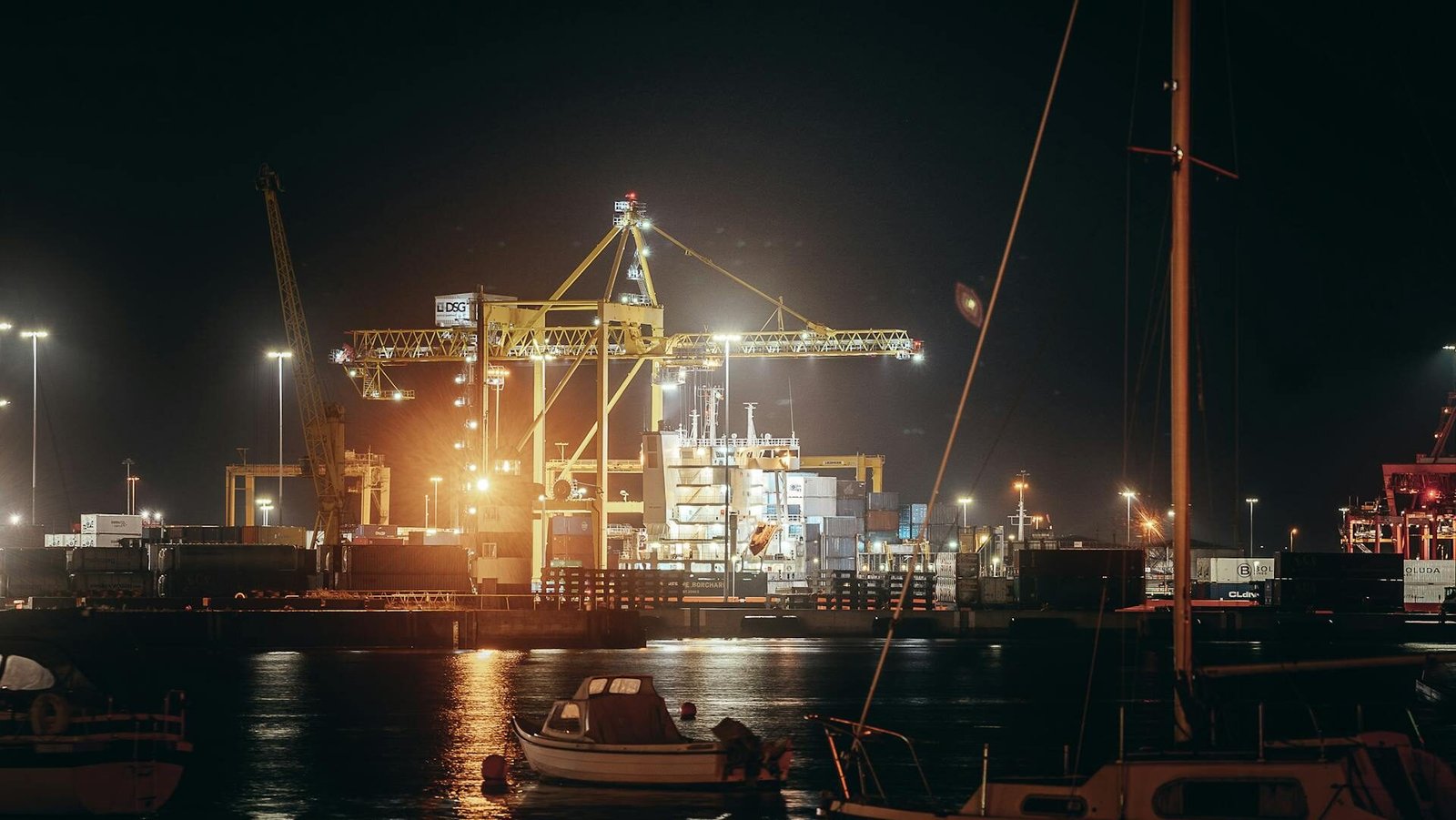
In today’s international trade landscape, the shipping of sensitive goods to the UK by sea has always been a focal point for numerous merchants and also a business segment fraught with challenges. Due to the strict supervision of the UK customs, transporting sensitive goods to the UK via sea freight faces numerous restrictions. However, by mastering precise methods and strategies, it is possible to break through these limitations and achieve efficient sensitive goods shipping to the UK by sea. Next, we will deeply analyze the key points and practical skills of sensitive goods shipping to UK by sea for you.
I. Core Breakthrough Points of Sensitive Goods Shipping to UK by Sea
Interpretation of the UK Customs Restriction List (Special Provisions for Food/Liquids/Counterfeit Brands)
The restriction list for sensitive goods formulated by the UK customs is the primary hurdle that must be overcome in sensitive goods shipping to the UK by sea. Among this list, the restrictions on food items are intricate. For instance, fresh meat and dairy products are often strictly prohibited from entry due to the potential of carrying pathogens or not meeting the UK’s animal and plant quarantine standards. For some processed foods, even though they can be transported, detailed ingredient descriptions, manufacturer information, and relevant health and quarantine certificates must be provided. These requirements have increased the difficulty of food transportation in sensitive goods shipping to the UK by sea.
Liquids are also strictly restricted in sensitive goods shipping to the UK by sea, especially alcohol – containing liquids. Take common alcohol – containing liquids like perfume as an example. Not only the accurate alcohol content needs to be indicated, but the packaging must also meet safety standards such as leak – proof and explosion – proof requirements, and a strict declaration process must be followed, demonstrating the strict supervision of liquid – type sensitive goods by the UK customs.
Counterfeit goods are the key objects of supervision by the UK customs in sensitive goods shipping to the UK by sea. Goods counterfeiting well – known brands infringe intellectual property rights. Once detected, the goods will be seized, and the consignor may also bear legal liability. However, if legitimate authorization documents can be provided to prove the legitimate source of the goods, it may be possible to pass customs smoothly, providing a compliant way for the transportation of counterfeit goods.
How the Consolidation Model Reduces the Inspection Rate of Single Sensitive Goods
The consolidation model in sensitive goods shipping to the UK by sea is an effective means to reduce the inspection rate of single sensitive goods. The consolidation model combines the goods of multiple customers for centralized transportation. When the customs conducts inspections, it is difficult to check each item in detail due to the large quantity of goods. By reasonably matching goods and dispersing sensitive goods among numerous ordinary goods, the probability of a single sensitive good being inspected can be effectively reduced.
For example, in sensitive goods shipping to the UK by sea, by consolidating a small amount of food – type sensitive goods with ordinary goods such as electronic products and clothing, the likelihood of a single food item being selected for inspection during the customs spot – check will decrease. Moreover, professional consolidation companies are familiar with the customs inspection rules and standards and can arrange and declare the goods in advance, further reducing the inspection risk and ensuring the smooth progress of sensitive goods shipping to the UK by sea.
II. Full – process Dismantling of Category Operations in Sensitive Goods Shipping to UK by Sea
Food Transportation: Comparison of Cold – chain/General Cargo Mixed – loading Schemes
Cold – chain Transportation
In the food transportation of sensitive goods shipping to the UK by sea, for perishable and temperature – sensitive foods such as fresh fruits and chilled meats, cold – chain transportation is the key choice. Cold – chain transportation maintains a low – temperature environment throughout the process to ensure the quality and safety of the food. However, it incurs high costs, requiring specialized refrigeration equipment and transportation vehicles.
Special packaging requirements also apply, such as the use of thermal insulation materials and refrigerated containers. In addition, cold – chain transportation has extremely high requirements for timeliness. Once the transportation time is too long, the quality of the food may be affected, posing high demands on the logistics arrangements in sensitive goods shipping to the UK by sea.
General Cargo Mixed – loading
For some non – perishable foods such as dried goods and canned foods, they can be considered for mixed – loading with general cargo in sensitive goods shipping to the UK by sea. This method has relatively lower costs and does not require special refrigeration equipment. However, the packaging of the food must be intact to prevent damage from extrusion and collision during transportation.
At the same time, when mixed – loading, it is necessary to avoid placing them together with goods with odors to prevent the food from absorbing odors. Good ventilation for the goods must also be ensured to prevent spoilage due to humidity, so as to guarantee the quality of food in sensitive goods shipping to the UK by sea.
Powder and Granule: Key Points in Preparing the MSDS Report (Taking Cosmetics as an Example)
When it comes to powder and granule products in sensitive goods shipping to the UK by sea, taking loose powder and eyeshadow powder in cosmetics as examples, the MSDS (Material Safety Data Sheet) report is of great significance. When preparing the MSDS report, all components of the product, including various additives and pigments, should be accurately listed. The description of the components should be precise down to the chemical names and content ratios. At the same time, the physical and chemical properties of the product, such as color, odor, density, and solubility, should be clearly defined.
In the section on hazard characteristics, it is necessary to state whether there are harmful substances and under what circumstances they may pose harm to the human body or the environment. Finally, detailed emergency response measures should be provided, including leak handling, fire response, and first – aid methods in case of contact with the human body. A complete and accurate MSDS report helps the customs understand the safety of the product and improves the customs clearance efficiency in sensitive goods shipping to the UK by sea.
Liquids: Practical Operation of Class I Dangerous Goods Declaration (Perfume/Alcohol Preparations)
In sensitive goods shipping to the UK by sea, perfume and alcohol preparations are usually classified as Class I dangerous goods. When making a declaration, detailed and accurate product information should be provided, including brand, model, components, and alcohol content. The packaging must meet the packaging standards for Class I dangerous goods, generally requiring the use of special leak – proof and explosion – proof containers, and obvious dangerous goods labels should be affixed to the outer packaging. In addition, a dangerous goods transportation identification report should be provided to prove the safety of the product during transportation.
In the declaration process, declaration documents, including the dangerous goods declaration form, packing list, and commercial invoice, should be submitted to the freight forwarder or shipping company in advance. The freight forwarder or shipping company will transmit the declaration information to the customs and the terminal. After waiting for the review to pass, the shipment can be arranged for loading and transportation. The entire process needs to be carried out in strict accordance with the regulations to ensure the transportation safety of the goods and smooth customs clearance in sensitive goods shipping to the UK by sea.

III. Key Risk Prevention and Control Strategies in Sensitive Goods Shipping to UK by Sea
Counterfeit Goods Transportation: OEM Authorization Letter Template and Customs Code Skills
OEM Authorization Letter Template
When it comes to counterfeit goods transportation in sensitive goods shipping to the UK by sea, the OEM (Original Equipment Manufacturer) authorization letter is indispensable. A standard OEM authorization letter should include detailed information of the authorizing party and the authorized party, such as company names, addresses, and contact information. The specific information of the authorized products, such as brand, model, and style, should be clearly defined, and the scope of authorization, whether it is exclusive or non – exclusive, as well as the geographical scope of authorization, should be specified.
At the same time, the authorization period and the rights and obligations of both parties should be stipulated. For example, the authorizing party needs to ensure the legality of the intellectual property of the product, and the authorized party should produce and transport in accordance with the authorization requirements. The authorization letter needs to be signed and sealed by both parties to ensure its legal effect, providing a legal basis for the transportation of counterfeit goods in sensitive goods shipping to the UK by sea.
Customs Code Skills
The correct selection of customs codes is crucial for the transportation of counterfeit goods in sensitive goods shipping to the UK by sea. The customs code determines the classification and tax rate of the goods and also affects the key points of customs inspection. When choosing a customs code, it is necessary to deeply study the UK customs code rules and try to select a code that matches the product characteristics and has a relatively low inspection rate.
For example, for products that resemble branded products in appearance but are actually self – designed, a code that focuses more on the product function or material can be selected to avoid using a code that obviously points to counterfeiting. At the same time, pay attention to the update and change of customs codes and adjust the declaration information in a timely manner to ensure the accuracy of the declaration and facilitate the smooth customs clearance of counterfeit goods in sensitive goods shipping to the UK by sea.
Anti – Seizure Measures: Interpretation of the Pre – customs Clearance Audit Service
The pre – customs clearance audit service is an important anti – seizure measure in sensitive goods shipping to the UK by sea. Before the goods are shipped, a professional pre – customs clearance audit team will comprehensively review the goods’ declaration documents, product information, and packaging. They will check whether the declaration documents are complete and accurate, whether the products meet the UK’s import regulations, and whether the packaging is compliant.
For example, for food – type goods, they will review whether the ingredients meet the UK’s food safety standards and whether the labels are clear and accurate. For liquid – type dangerous goods, they will check whether the packaging meets the dangerous goods packaging requirements and whether the declared hazard characteristics are accurate. Through the pre – customs clearance audit service, problems can be identified and rectified in advance, avoiding the seizure of goods in the UK due to non – compliance and greatly improving the customs clearance success rate in sensitive goods shipping to the UK by sea.

IV. Cost Optimization Solutions for Sensitive Goods Shipping to UK by Sea
LCL Freight Calculation Model (Cubic Volume vs. Actual Weight)
In sensitive goods shipping to the UK by sea, the calculation of LCL (Less – than – Container – Load) freight usually takes the larger value of the cubic volume and the actual weight. The cubic volume is calculated based on the volume of the goods, and the actual weight is the real weight of the goods. For example, for a batch of goods with a large volume but light weight, such as plush toys, the freight corresponding to the cubic volume may be higher than that corresponding to the actual weight, and in this case, the freight is calculated according to the cubic volume.
For goods with a heavy weight but small volume, such as metal products, the freight corresponding to the actual weight may be higher, and the freight is calculated according to the actual weight. After understanding this calculation model, consignors can optimize the freight cost by reasonably packaging the goods, reducing the volume of the goods, or choosing packaging materials that are light in weight but suitable in volume. At the same time, when arranging the consolidation of goods, try to match goods with relatively balanced cubic volumes and actual weights to make full use of the container space and reduce the unit freight cost in sensitive goods shipping to the UK by sea.
Application of Duty – free Quotas: Personal Use vs. Commercial Declaration
Personal Use Duty – free Quota
The UK has set duty – free quotas for personal use items, which provides convenience for individuals transporting goods in sensitive goods shipping to the UK by sea. If the goods are determined to be for personal use and their value is within the duty – free quota, customs duties and value – added tax can be exempted. Generally, personal use items should meet the principle of reasonable personal use, and the quantity should not be excessive.
For example, when an individual purchases a small amount of cosmetics, clothing, etc. for personal use, as long as the total value does not exceed the duty – free quota, no taxes need to be paid. However, it should be noted that the customs will judge whether it belongs to personal use according to the nature and quantity of the items. For example, if a large quantity of cosmetics of a certain brand is purchased, it may be suspected of being for commercial purposes, and the duty – free quota cannot be enjoyed, affecting the cost and process of sensitive goods shipping to the UK by sea.
Commercial Declaration Duty – free Strategies
For commercial goods in sensitive goods shipping to the UK by sea, although there is no such clear duty – free quota as for personal use, the tax can be reduced through reasonable declaration strategies. For example, apply for a specific tariff rate by taking advantage of trade agreements or preferential policies. Some countries have signed free trade agreements with the UK, and eligible goods can enjoy low tariffs or even duty – free treatment.
In addition, accurately declaring the value of the goods is important. Over – declaration will increase the tax cost, and under – declaration may be regarded as tax evasion by the customs and subject to penalties. By reasonably using these duty – free strategies, the transportation cost of commercial goods in sensitive goods shipping to the UK by sea can be effectively reduced.
V. Expansion Directions of Emerging Categories in Sensitive Goods Shipping to UK by Sea
New Regulations for E – liquid Transportation (2024 Nicotine Limit)
Since 2024, the UK has introduced new regulations for e – liquid transportation, with the focus on the nicotine limit, which has a significant impact on e – liquid transportation in sensitive goods shipping to the UK by sea. The new regulations clearly define the upper limit of nicotine content in e – liquids. E – liquids exceeding this limit will face stricter supervision or even be prohibited from transportation. For enterprises and consignors engaged in e – liquid transportation, first of all, it is necessary to ensure that the e – liquids to be transported meet the nicotine limit requirements.
In the product production process, the nicotine addition amount should be strictly controlled, and relevant test reports should be obtained through professional testing institutions. When making a transportation declaration, accurately provide the nicotine content information of the e – liquid and proof documents such as test reports. At the same time, pay attention to other requirements of the UK customs for e – liquid transportation, such as packaging and labeling, to ensure the smooth transportation and customs clearance of goods in sensitive goods shipping to the UK by sea.
Fast – track for Paste – type Medical Supplies
With the increasing global demand for medical supplies, the UK has opened a fast – track for paste – type medical supplies in sensitive goods shipping to the UK by sea. Paste – type medical supplies such as ointments and disinfection gels can enjoy priority customs clearance under specific conditions. To make good use of this fast – track, consignors need to ensure the quality and safety of the goods and provide quality inspection reports and product qualification certificates.
The packaging of the goods must meet the transportation standards for medical supplies, with good sealing and protection to prevent leakage or damage during transportation. When making a declaration, clearly mark the goods as paste – type medical supplies and provide accurate declaration documents according to the requirements of the fast – track, including detailed product descriptions, uses, and manufacturer information. By following these requirements, the customs clearance speed of paste – type medical supplies can be accelerated, meeting the market demand in a timely manner and promoting the efficient development of sensitive goods shipping to the UK by sea in this field.





